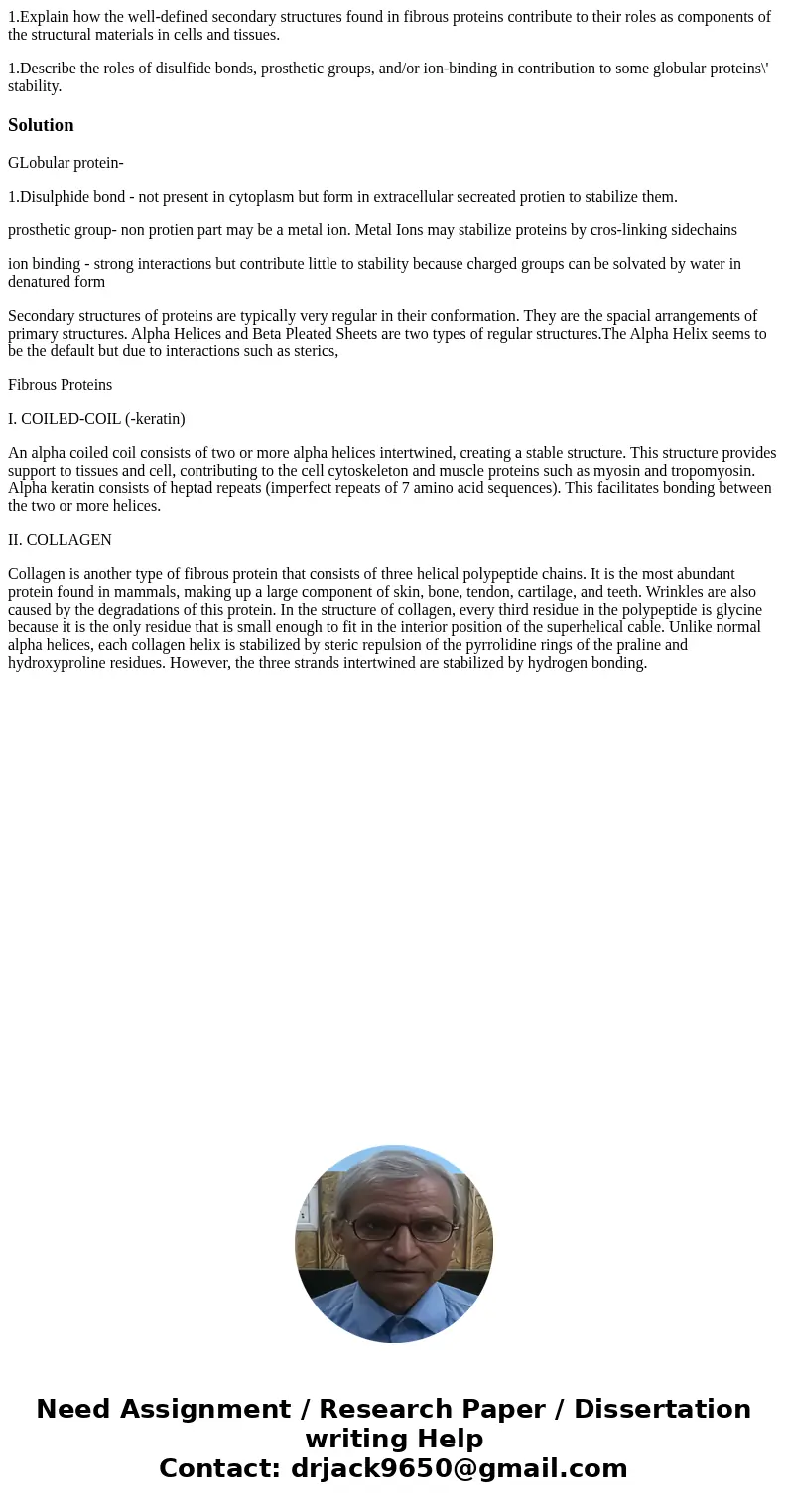1Explain how the welldefined secondary structures found in f
1.Explain how the well-defined secondary structures found in fibrous proteins contribute to their roles as components of the structural materials in cells and tissues.
1.Describe the roles of disulfide bonds, prosthetic groups, and/or ion-binding in contribution to some globular proteins\' stability.
Solution
GLobular protein-
1.Disulphide bond - not present in cytoplasm but form in extracellular secreated protien to stabilize them.
prosthetic group- non protien part may be a metal ion. Metal Ions may stabilize proteins by cros-linking sidechains
ion binding - strong interactions but contribute little to stability because charged groups can be solvated by water in denatured form
Secondary structures of proteins are typically very regular in their conformation. They are the spacial arrangements of primary structures. Alpha Helices and Beta Pleated Sheets are two types of regular structures.The Alpha Helix seems to be the default but due to interactions such as sterics,
Fibrous Proteins
I. COILED-COIL (-keratin)
An alpha coiled coil consists of two or more alpha helices intertwined, creating a stable structure. This structure provides support to tissues and cell, contributing to the cell cytoskeleton and muscle proteins such as myosin and tropomyosin. Alpha keratin consists of heptad repeats (imperfect repeats of 7 amino acid sequences). This facilitates bonding between the two or more helices.
II. COLLAGEN
Collagen is another type of fibrous protein that consists of three helical polypeptide chains. It is the most abundant protein found in mammals, making up a large component of skin, bone, tendon, cartilage, and teeth. Wrinkles are also caused by the degradations of this protein. In the structure of collagen, every third residue in the polypeptide is glycine because it is the only residue that is small enough to fit in the interior position of the superhelical cable. Unlike normal alpha helices, each collagen helix is stabilized by steric repulsion of the pyrrolidine rings of the praline and hydroxyproline residues. However, the three strands intertwined are stabilized by hydrogen bonding.

 Homework Sourse
Homework Sourse